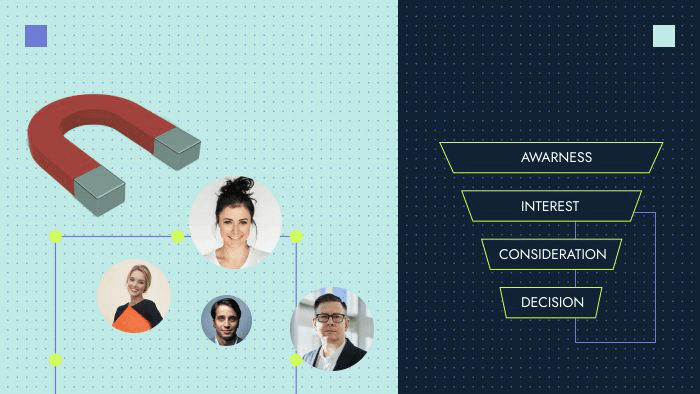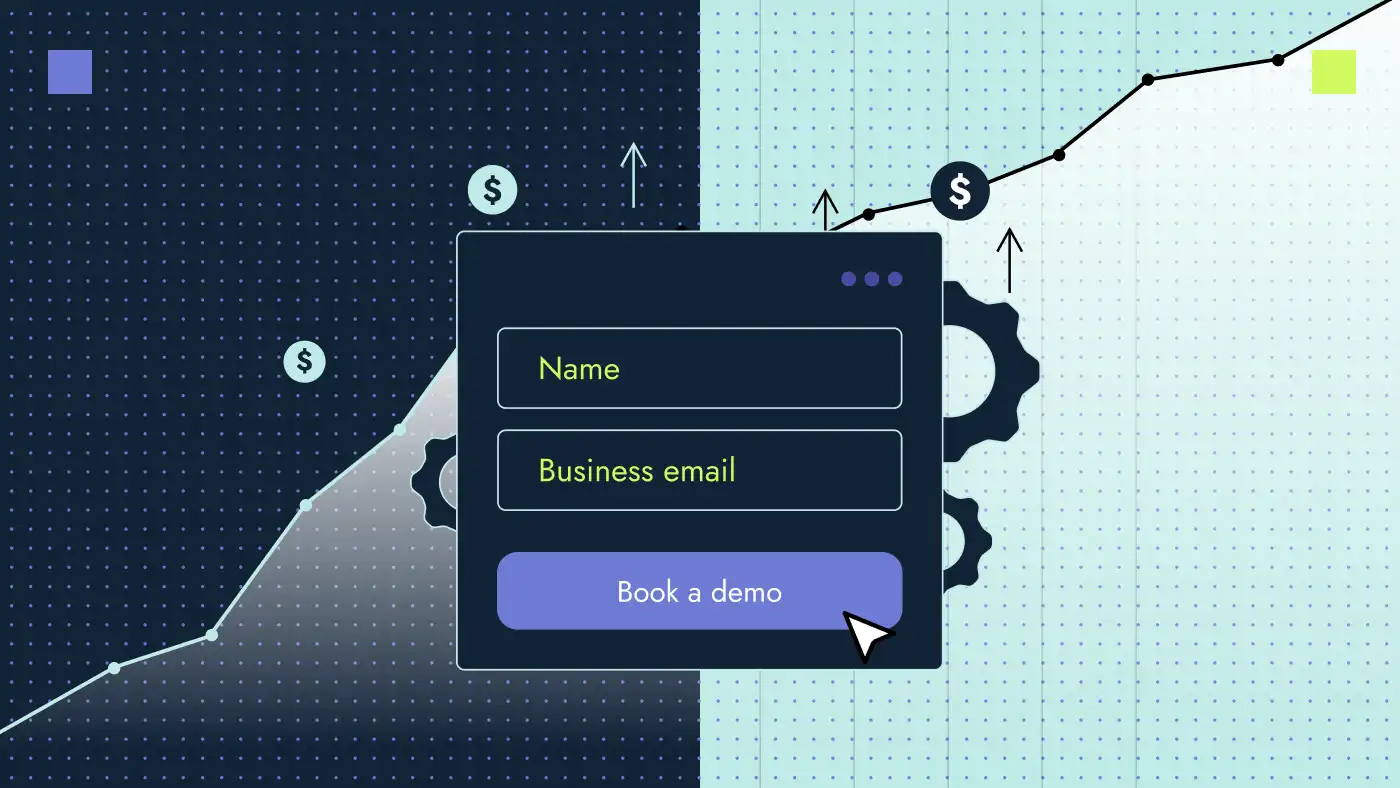Having a grasp of B2B demand generation strategies is critical to winning a significant share of voice — from organic, paid and referral channels. The aim is to get other companies interested in what you sell.
B2B demand generation brings more prospects to business through building a meaningful relationship between the two companies. You create awareness using tools such as free trials, webinars, emails, blog articles and other creative omnichannel campaigns.
Customers will remember their interaction with your company based on how you made them feel. If you are able to anticipate their needs and address their pain points, you start building your reputation as a thought leader in the industry.
The rise of B2B digital marketing trends
The B2B buyer journey has evolved from physical buyer-to-seller interaction to digital-led conversations led by a spike in the use of e-commerce and digital assets. Over 75% of buyers and sellers now prefer digital, self-guided service through a buyer’s journey, per McKinsey.
The increased importance of digital channels such as social media and search engine optimization (SEO) has caused more demand for B2B digital marketing. Business sellers know that embracing efficient organic search, paid search and social media marketing programs is critical more than ever.
Marketing teams are funneling more money into online advertising and digital communications. B2B buyers now want to connect with prospective suppliers through digital channels and avoid talking to sales as much as possible. According to Gartner, by 2025, there will be a significant change in how customers buy — with 80% of B2B sales interactions expected to occur in digital channels.
What is B2B demand generation?
Demand generation focuses on creating interest and awareness for a product or service. It is a strategic approach aimed at generating demand for what a business offers, ultimately driving potential customers to take action.
B2B demand generation encompasses a variety of activities and tactics designed to engage, educate and persuade target business audiences. Content-driven marketing, specifically search optimized content, is one of the most common tactics used in B2B demand trends.
Webinars, podcasts and in-person events are helpful ways to create awareness and demand for your brand. More interactive methods to boost engagement and create demand for your product are social media engagements, email marketing and live chats.
“Customers who perceived the information they received from suppliers to be helpful in advancing across their buying jobs were 2.8 times more likely to experience a high degree of purchase ease and three times more likely to buy a bigger deal with less regret.” (Gartner Insights)
Understanding the B2B buyer journey
Business buyers go through a journey to become aware of, consider and then decide to purchase a new product or service. To drive demand, you need to deliver the right message to your ideal customer.
→ Download now: ICP template for B2B teams
Once you identify your target audience and understand their behavior and problems, you can target each buyer persona with content that resonates with their personality.
Let’s look at the importance of understanding the B2B buyer journey:
- Targeted messaging: Understanding the various buyer personalities within your market helps in tailoring your marketing messages and content to resonate with each type. This personalization increases the relevance of your outreach efforts, making them more compelling to individual buyers.
- Content mapping: Understanding the buyer journey allows you to map relevant content and touchpoints to each stage of the journey. This ensures that your marketing materials align with the buyer’s needs at different phases, from awareness to consideration and decision-making.
- Lead nurturing: The buyer journey provides insights into the timeline and steps buyers go through before making a purchase. You can use this knowledge to implement lead nurturing campaigns, sending the right content at the right time to guide prospects through their journey.
- Attribution modeling: Recognizing where in the B2B buyer journey your marketing efforts have the most impact helps in attributing success and optimizing your demand gen strategies. You can allocate resources more efficiently to channels and tactics that drive results at different stages of the journey.
How to use your demand gen strategy to attract leads
While demand generation helps increase brand awareness, the ultimate aim is to convert the interest of your clients into action. A well-executed demand generation campaign should transform your prospects into marketing qualified leads after they have moved through the buyer journey.
Let’s talk about the five essential steps involved in attracting leads:
1. Locate potential customers
Looking for new business prospects to convert into customers is known as prospecting. Knowing your buyers is key to finding the right way to sell to them. If you don’t understand your target audience, you won’t know what they want and what to sell to them. To get a clear picture of your target audience, collect leads from various sources such as website sign-ups, social media interactions and events.
Locating potential customers allows you to segment the audience based on criteria such as behavior, demographics, lifestyle or preferences. This segmentation is essential for creating personalized and targeted content that resonates with your audience.
2. Know customer needs and pain points
One of the most effective B2B sales trends is making everything about the buyer. The seller should learn and cater to the needs and preferences of a potential buyer.
Potential customers are interested in how your product or service can help them. Researching the problems they have and how your product provides a solution can be key to landing a potential customer and increasing customer lifetime value.
According to the Business Journals, the most efficient value proposition speaks directly to what the customer cares about the most. In other words, you must refine your business value down to the basics and focus on the impact your product and services have on other businesses.
3. Reach core members of the firm
Appeal to key decision makers such as researchers, managers, directors, CEOs, CTOs and COOs. To get these stakeholders interested, you need to communicate your business value.
The goal is to build lasting customer relationships and create awareness among those who have a significant impact on the adoption of a product or service by the organization.
Once you understand the organizational structure and identify individuals who have decision-making authority, you can engage in personalized communication, such as targeted emails, phone calls or face-to-face meetings, to create a connection and build trust.
4. Draw a marketing plan
Once you have established your target market and gathered all the information about how customers buy, the next step is to lay out your B2B marketing strategy.
Clearly define the overall objective of the marketing plan such as:
- Increase brand awareness
- Generate leads
- Drive sales revenue
You need to determine the marketing channels most relevant to your target audience and allocate a budget for each initiative. To effectively position your offering and nurture potential customers at each stage of the sales funnel, develop a well-aligned strategy that focuses on creating valuable and relevant content.
5. Execute your marketing plan
To successfully execute your marketing plan, start by launching advertising campaigns, publishing content, conducting events and engaging with your audience through various channels.
Continuously monitor the key performing metrics and analytics to assess the effectiveness of each tactic. Based on the performance data, optimize your marketing strategies by adjusting budget allocations, refining targeting parameters and tweaking messaging.
The most preferred B2B marketing channels include:
- Content marketing: A cornerstone of demand generation in B2B, it focuses on blog posts, whitepapers and ebooks to educate and engage the target audience.
- Email marketing: Email is used for lead nurturing, delivering targeted content, promoting events and maintaining regular communication with prospects and customers.
- SEO lead gen: Optimizing your online content for search engines is crucial for B2B visibility. Appearing in the SERPs for relevant keywords increases the chances of attracting organic traffic from businesses actively seeking solutions.
- Social media marketing: Social media platforms, especially LinkedIn, are popular for B2B marketing. Companies use these channels to share industry insights, promote content, engage with prospects and build relationships with key decision-makers.
Top B2B marketing trends for demand gen
Let’s take a look at the top B2B digital marketing trends to optimize your demand generation strategies.
Video marketing
According to Wyzowl’s State of Video Marketing 2023, 91% of businesses use video-based content as a marketing tool. Whether it’s product demonstrations or thought leadership videos, visual content helps convey complex messages in an engaging and digestible format.
You can also host webinars or virtual events and promote them through video marketing. Webinars provide an interactive platform for discussing industry topics, addressing pain points and showcasing your expertise.
Account based personalized marketing
Account based marketing involves targeting specific high-value accounts with personalized marketing efforts. It aligns marketing and sales efforts to focus on key decision-makers within target companies.
Tailoring messages, recommendations and content based on individual preferences and behaviors enhances the overall customer experience and increases the likelihood of conversion.
Search marketing
Having a well-planned SEO strategy is a great way to generate relevant organic traffic for your business. When you create and share research-driven content, you address the specific pain points of your target audience.
Conduct thorough B2B keyword research to find the terms and phrases your customers use when looking for products or services similar to yours. Apart from creating SEO content, you can also use PPC advertising platforms like Google Ads to bid on relevant keywords.
If applicable, optimize your online presence for local SEO. This approach is particularly important for B2B companies targeting a specific geographic area.
AI-driven marketing
Artificial intelligence (AI) processes large sets of data to identify patterns and customer behavior, helping businesses predict which leads are more likely to convert into customers. AI in marketing helps understand consumer sentiment and engage with potential customers in real time, ultimately leading to increased conversions and revenue.
Plus, marketing teams use generative AI to create personalized marketing messages and experiences, improving their own productivity.
Chatbots and conversational marketing
The use of automated chat systems and live chat functionalities facilitates real-time interactions between businesses and their customers.
You can program chatbots to ask qualifying questions to website visitors. This approach helps in identifying and qualifying leads based on their needs, preferences and the stage of the buyer journey. By gathering relevant information, businesses prioritize and segment leads effectively.
Chatbots also guide prospects through the sales funnel by providing information and answering questions. They can assist in product selection, showcase features and even initiate the lead nurturing process by capturing contact information for follow-up.
Audio content
Over 130 million people in the US engage with audio content daily, per NPR and Edison. Given the prominence of audio SEO and voice search, audiences expect an audio option in articles as well.
Using a text to speech (TTS) tool allows you to convert written content, such as blog posts, articles or whitepapers, into audio format. This strategic diversification not only amplifies engagement but also elevates the overall user experience, expanding your reach to a wider and more diverse audience.
👉 Get started with our TTS tool to reap the benefits of audio content.
B2B marketing tools to generate demand
B2B marketing tools are used for different forms of online marketing. The right software helps you run your campaigns effectively and keep track of all of your marketing channels with ease.
Let’s take a look at the five most useful marketing tools that are a perfect fit for a growing B2B SaaS startup:
1. HubSpot
HubSpot is a cloud-based CRM platform that helps companies of all types and sizes track and nurture leads and analyze business metrics. HubSpot facilitates monitoring of outbound and inbound leads, sales pipeline management with automation, leads and contact management, email campaigning and tracking.
Key features:
- All-in-one inbound marketing platform
- Marketing automation, CRM, sales and customer service tools
- Email marketing, lead nurturing and analytics
- Content management system (CMS) for website creation
2. Unbounce
Unbounce helps you build and test your landing pages and website popups. It has different templates and lets you customize the CSS and JavaScript. Unbounce is an easy-to-use tool for business owners looking to increase conversions online.
Key features:
- Landing page builder with a drag-and-drop interface
- A/B testing for optimizing landing page performance
- Conversion tracking and analytics
- Integration with other marketing tools
3. GetResponse
GetResponse is useful for running email marketing campaigns and creating landing pages.
Key features:
- Email marketing and automation
- Landing page builder
- AI-powered automated email sequences
- Analytics and reporting
4. BuzzSumo
BuzzSumo gives you content research and performance insights. It is also useful for monitoring content performance and discovering new topic ideas.
Key features:
- Content discovery and analysis
- Trend identification and topic research
- Social media monitoring and engagement
- Influencer identification
5. Semrush
Semrush offers competitive intelligence and helps with every aspect of search engine optimization. You can use it for technical audits and optimization, suggestions for growing your organic traffic and position tracking.
Key features:
- Competitive analysis and keyword research
- Site audit and backlink analysis
- Content marketing tools
- Position tracking and analytics
Scale your B2B growth with an impactful demand generation strategy
B2B demand generation allows you to leverage different channels to increase awareness and demand for your products and services. Tech startups that have partnered with us were able to generate B2B demand by focusing on:
- B2B SEO: Auditing the website to identify improvement areas and implement a data-driven search strategy.
- Website design and development: Building optimized websites to improve rankings and user experience.
- Editorial calendar: Building a purpose-led content calendar that strategically caters to various stages of the buyer’s journey.
- B2B content writing: Drafting relevant and authentic copy to help you build thought leadership, earn valuable SERP positions and generate leads.







